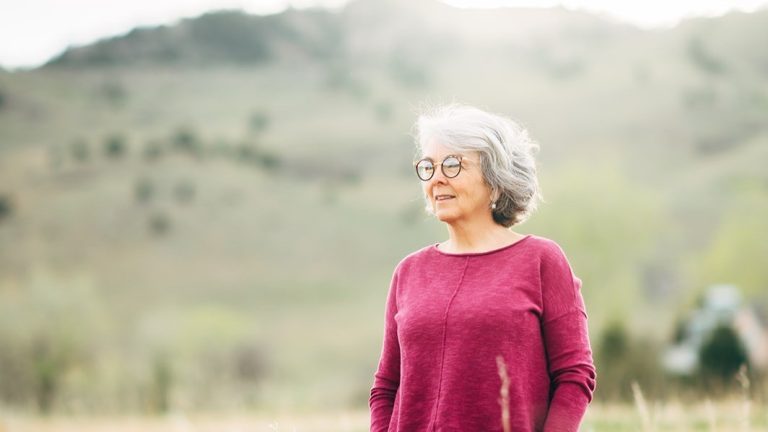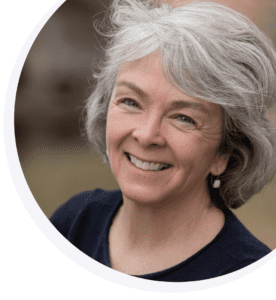
Movies serve as powerful cultural touchstones, shaping, reflecting, and conveying shared values, stories, and perspectives. From feature films to documentaries, movies play a vital role in how we understand and discuss life’s profound themes, including death and dying.
In this article, I’m pleased to share excerpts from my conversation on the Best Life Best Death Podcast, Episode #139, with Johanna Lunn, Director of an impactful trilogy of films and Co-Founder of the When You Die Project. We focus on her third film for WYD, The Architecture of Death: The Inner World of Dying. Enjoy!
_______
Diane Hullet: Hi, I’m Diane Hullet, and you’re listening to the Best Life, Best Death podcast. Today, I have the pleasure of welcoming back Director Johanna Lunn. Welcome, Johanna.
Johanna Lunn: Hello, Diane. I’m so happy to be here with you again.
Hullet: It’s always such a pleasure to speak with you about your work! Johanna, as co-founder of The When You Die Project and director of an insightful trilogy of films about death and dying, you’ve created some truly fascinating things for people to explore. Let’s start with your website, whenyoudie.org, which I encourage all our listeners to check out. It’s so thoughtfully curated, blending education with creativity around death and dying. Tell us a little about how it all came about.
Lunn: Well, The When You Die Project grew from the films. I started out thinking that I was making just one film, but I quickly found that there was much more to learn about and share. Filmmakers typically approach a documentary with a script, knowing who to interview and what to expect. But I went into this differently. I felt I didn’t have all the answers, and I wanted the project to unfold organically.
Having experienced loss and grief myself, it became a personal passion project. As the material for the idea of this one film grew, I realized we needed a platform to share this wealth of insights, which led to the website.
It’s a space for sharing ideas and for featuring people who’ve dedicated their lives to understanding and supporting the dying process—from death doulas and therapists to palliative care nurses and many, many more. There are things to read, podcasts to listen to, resources to learn about, and of course, the three films.
Hullet: This wealth of experience which is shared on the website really stands out in the films. What started as a single film became a trilogy—In the Realm of Death and Dreaming, Saying Goodbye: Preparing for Death, and now, The Architecture of Death: The Inner World of Dying. These films don’t have to be watched in sequence, but each one uniquely explores aspects of dying. Could you tell us more about the latest one?
Lunn: Absolutely. All three films center on people who’ve spent years working in end-of-life care. I wanted the focus to be on these experts and the insights they bring from thousands of hours with the dying.
The Architecture of Death, the third film, delves into the process of dying. We explore not only the physical aspects but also the emotional and spiritual dimensions. There’s an idea in the film that “the body knows how to die, but the ego doesn’t.” This speaks to the struggle many face emotionally, even as the body transitions.
The film looks at the inner world of dying—the ways family dynamics shift, how old wounds may heal, and the significant spiritual experiences that can accompany this time. Our fears, our attachments, our “unfinished business”—all these emotional elements can make the transition challenging.
Hullet: I love that perspective. Your films bring these expert voices together, and your own reflections also weave through the narrative, adding a cohesive voice that can ask the big questions. You’ve mentioned before how our culture lacks a cohesive story for what happens to the soul at death. And without a framework for the emotional or spiritual journey, it’s harder for families to process loss.
Lunn: By exploring and discussing death openly, we can reduce some of the fear. Death then becomes a natural part of life, like the changing seasons. Some people can even see death as a healing opportunity, a time to make meaning of their life and address lingering regrets.
Families are a big part of this too; their grief often begins with a diagnosis and deepens over time. When families have an understanding of these dynamics, they can better support each other, create memories, and find meaning.
Hullet: Oh, yes. I often say, the more conversations a family has about these topics, the lower the chance of conflict when that time comes. When there’s clarity and openness, families can avoid some of the emotional turmoil.
Lunn: Exactly. These conversations are essential because at some point, the focus shifts from curing to caring. Medical professionals play a critical role here—they’re trained to cure, but when curing is no longer an option, there’s a need for support that values comfort and quality of life.
For example, when my father was dying, he wanted to see the autumn leaves one last time. My brother took him for a drive, and it was a simple but deeply meaningful experience for him. These moments become part of what I call “precious time.” It’s a period when families can focus on meaningful experiences rather than solely on medical interventions.
Hullet: That’s beautiful. Precious time is such an apt phrase, also used by hospice nurse and end-of-life educator Barbara Karnes. And I think films like yours allow families to experience these ideas safely, by reflecting on them without the immediate personal weight of their own reality. A movie is a powerful way to take this in and soften people’s perceptions of death.
Lunn: Absolutely. Watching a film is a safe way to explore difficult ideas. For my trilogy, I tried to create a “room” where experts could discuss, and viewers could listen without judgment or pressure to act. It’s an experience that engages both heart and mind, using imagery, music, and stories. That layered experience lets us be touched and changed in a gentle way.
Hullet: It does. There’s one scene where snow is falling, almost in slow motion. I’ve watched your films many times, and that scene always touches me deeply. It’s as if I’m seeing snow for the first time, and it breaks my heart open.
Lunn: Thank you, Diane. That’s exactly what I hoped to convey—a beauty that moves viewers. We’re not always ready to talk about these things openly, but films let us explore them. For me, seeing how people respond and connect with the material has been incredibly rewarding.
Hullet: What do you hope viewers take away from The Architecture of Death and the trilogy as a whole?
Lunn: For me, the takeaway is the importance of acknowledging and validating the experiences of those who are dying. So many people report mystical experiences—visits from loved ones, profound dreams, moments of connection. For the dying, these can be immensely comforting.
Whether we believe in an afterlife or not, we can respect these experiences, letting the dying have their peace. In many ways, this is sacred time, and as a culture, we can grow by embracing it with respect, curiosity, and open hearts.
Hullet: What an incredible message. Johanna, thank you for your work and for sharing these insights about the film. I encourage everyone to explore The When You Die Project at whenyoudie.org, and as always, you can find out more about the work I do at bestlifebestdeath.com. Thank you so much for joining me today.
Lunn: Thank you, Diane. It’s always a pleasure.

End of Life Doula, Podcaster, and founder of Best Life Best Death.